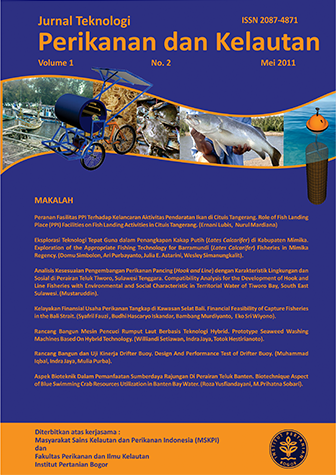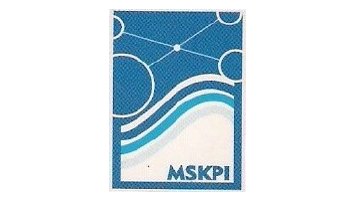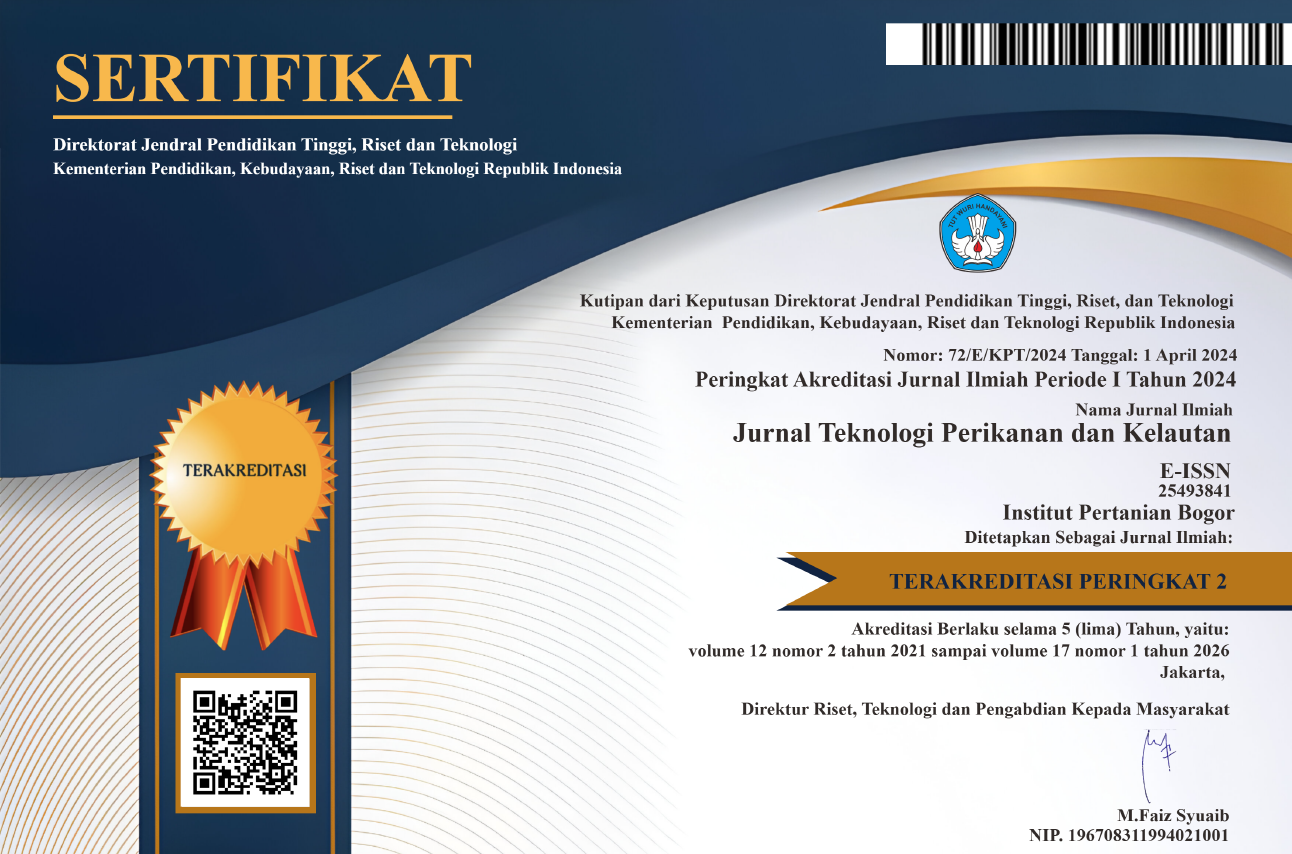ASPEK BIOTEKNIK DALAM PEMANFAATAN SUMBERDAYA RAJUNGAN DI PERAIRAN TELUK BANTEN
Abstract
Indonesia has the potential fishery resources of large marine fish. One of the potential of marine fisheries is small crab (Portunus pelagicus). Small crab is one Crustracea and its existence almost spread all over the waters of Indonesia. This study aimed to: 1) Describe the swimming crab net consists of construction of fishing gear, methods of operation, and productivity of swimming crab net, 2) Determining the influence of resource utilization activities of small crab on the level of biomass, production and sustainable levels in Banten Bay waters. Data collected in this study consisted of primary data and secondary data. Primary data was obtained directly by researchers with direct interviews using a questionnaire to fishermen in Banten Bay. Secondary data obtained from Fishery Port Beach (PPP) and the Marine Fisheries Department in Karangantu. Research using time series data of 2000-2008 are processed using Microsoft Office Excel. Swimming crab net construction consists of corporate nets, rope line, float, float line, lead sinker, sinker line, float marking, float marking line, stone sinker, and stone sinker line. Productivity of swimming crab net in 2008 was 209.37 kg per unit, while in 2010 was 320 kg per unit. Productivity of swimming crab net in 2008 of 10.72 kg per trip and in 2010 of 5.33 kg per trip. Productivity swimming crab net operating costs in 2010 with 0.0000676 kg/rupiah. The number of optimum swimming crab net to operate in Banten Bay waters is 178 units.





















